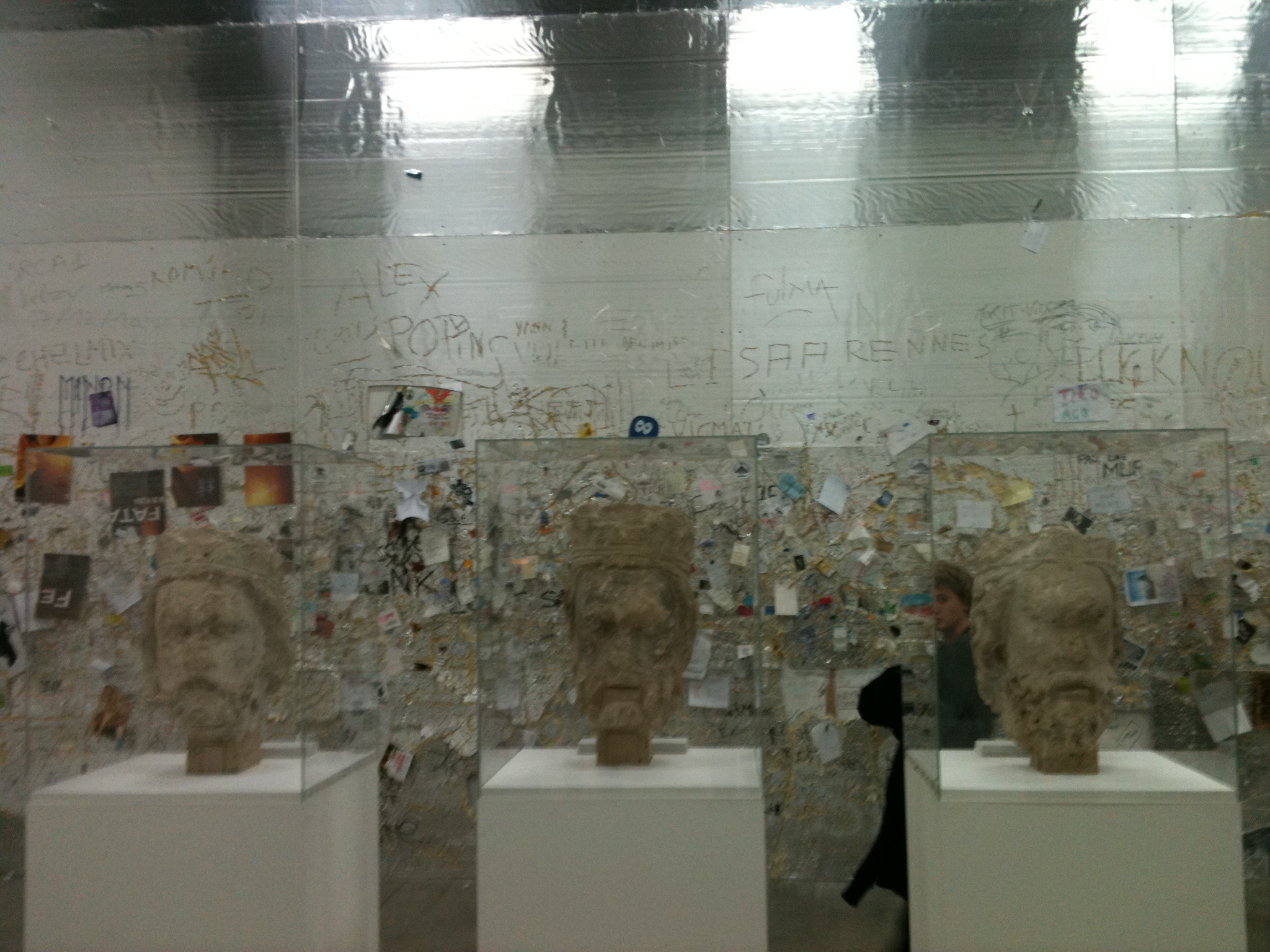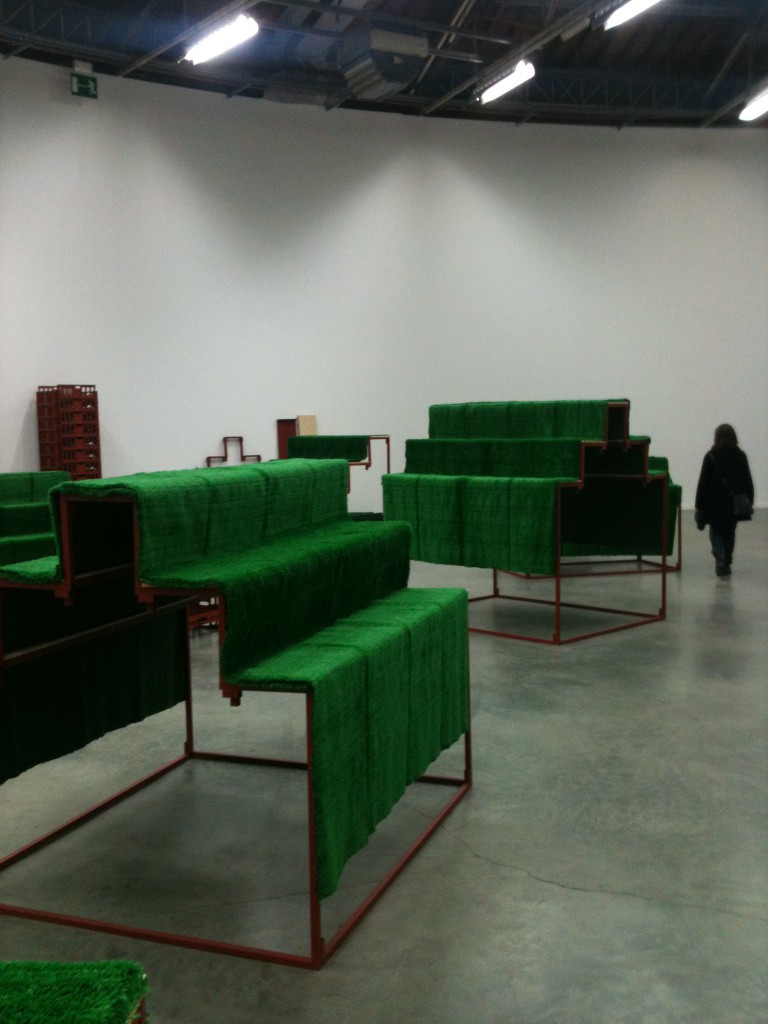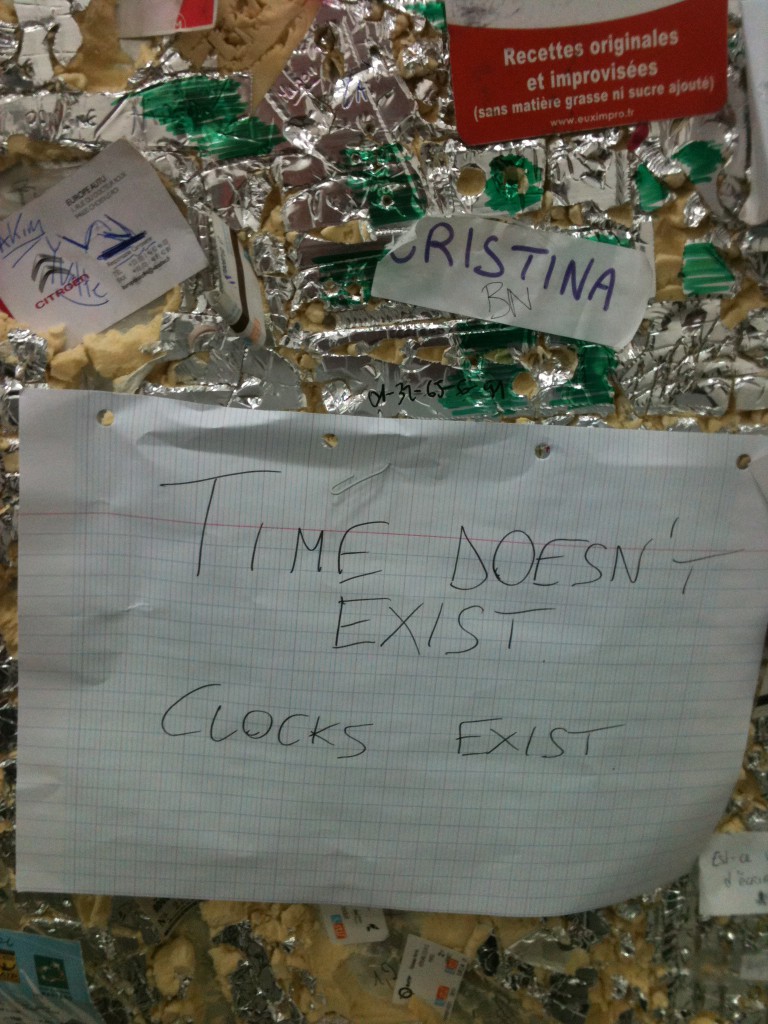
The Heads of the Kings of Judah and Rudolph Stingel's "Untitled" at the Palais de Tokyo, Paris
It is a truth universally acknowledged that artists make the best curators. Mark Wallinger’s exhibition, The Russian Linesman at the Hayward Gallery last March, was a proposal about what creative curatorship might actually mean – a bringing together of historically or aesthetically disparate objects which generate unexpected “sparks of poetry” (pace Max Ernst). Adam McEwen’s show, Fresh Hell at the Palais de Tokyo in Paris, is a continuation in the same spirit. Drawing on the intellectual dilettantism of the way we collate and digest information these days, and the increasing anachronism of academic specialization, McEwen’s show is a wildly disparate generator of transhistorical energy, epitomized in its display of Walter de Maria’s 1967 High Energy Bar. Set into the wall in a brightly-lit vitrine, the work – a footlong steel bar, glowering with condensed power – is the fulcrum of the whole exhibition, an object whose aesthetic and actual density lodges it in place against the onrushing stream of history.
McEwen’s theme is the weight of things, the way that art objects of particular power resist dispersal and dissolution. Like Wallinger, McEwen hops between historical periods with fluency, drawing out resonances without hammering a thesis home (as he himself says, “it’s the artworks that are in control, not the curator”). The opening room, for instance, pits a wall of silver industrial insulation panels by Rudolf Stingel (on which visitors are invited to stick notes or photos, or gouge their name in) with three huge hunks of medieval stonework: the heads of the Kings of Judah, lopped off the west façade of Notre Dame by anti-monarchists in 1793 and discovered, buried, in the 1970s. The juxtaposition invites certain readings: iconoclasms old and new, the palimpsest of history, Paris itself as a site of perennial protest. And yet the heads (which, sorry, are by far the most fascinating and beautiful works in the show) remain, despite their vandalism and interment, fully alive, blazing with authority embodied in their muscular carving and physical presence. That weight allows them to stand outside history, an idea echoed in a note pinned to the Stingel behind: “Time doesn’t exist. Clocks exist.”

Michael Landy, "Market" (1990)
The physicality of art objects epitomizes their resistance to historical time. A safe, displayed as a work by Maurizio Cattelan, from a notorious heist (and titled after the amount of lire owned by the bank, post-theft: -70,400,000), throbs with remembered and imagined violence. Two beautiful drawings by Philip Guston from his transitional late-sixties period sag down with the gravity of objects seen. The display of Michael Landy’s 1990 installation of empty market stalls resurrects post-Thatcherite economic despondency in a self-evidently timely way, but also picks up on the awkward physicality of the stalls themselves, cumbersome ziggurats of Astroturf and brown plastic. And Martin Kippenberger’s wonderfully titled Memorial of the Good Old Time from 1987, an inflatable black skip, wobbles awkwardly with pathetic obesity, full up fit to burst with hot air. These objects seem culled for their stubbornness.
McEwen’s show renders history as horizontal. A labyrinth of wooden slats hangs from the ceiling next to a 15th-century statue of St Florian, pocked with woodworm. The labyrinth, a 1994 work by Georg Herold, may be a whimsical allusion to the dour weightiness of minimalist sculpture, but its placement suggests the pilgrims’ labyrinths in the naves of great medieval cathedrals. Similarly, the St. Florian, stranded in a clinical vitrine, is revitalized and estranged by the proximity. The patron saint of firefighters pours water on the tiny town at his feet with the blank and melancholy indifference of a sculpture by Charles Ray. David Hammons’s In The Hood, his green sweatshirt hood nailed to the wall at head height, becomes a monk’s habit. Sarah Lucas’s motorbike helmet, made of cigarettes, is a cockeyed crusader’s helmet. A toy helicopter awkwardly landing on a plank of wood, in a video by Roman Signer, is a saintly miracle captured on film.
McEwen’s parallel of medieval and contemporary art posits the former as stranger than their historical alibis allow, and the latter as relics of singular intensity. Think back to that De Maria, vibrating with tensed energy like a saint’s collarbone in a glass canister. The comparison is a melancholy one, though, suffused with deathliness. Death and its comprehension in the tiny human mind, especially within the limitations of human language, is a perennial subject of both medieval and contemporary art. But the juxtaposition does something more. The transcendent yearning of medieval art points to its absence in the contemporary works that surround it. The literal hell alluded to in the show’s title becomes the figurative hell of the artist’s studio; the title is a quote from Dorothy Parker, itself cited in an interview with Bruce Nauman in the early 1970s. The premise of the show — that certain objects stand fast against the vagaries of history — draws up limitations in many of the more recent works on display, and the ineffable coolness of the space itself starts to look a bit prissy, the world of contemporary art more self-regarding than usual. What stays with you is the hard unfocused eyes of those three bodiless heads, staring out against the past.




